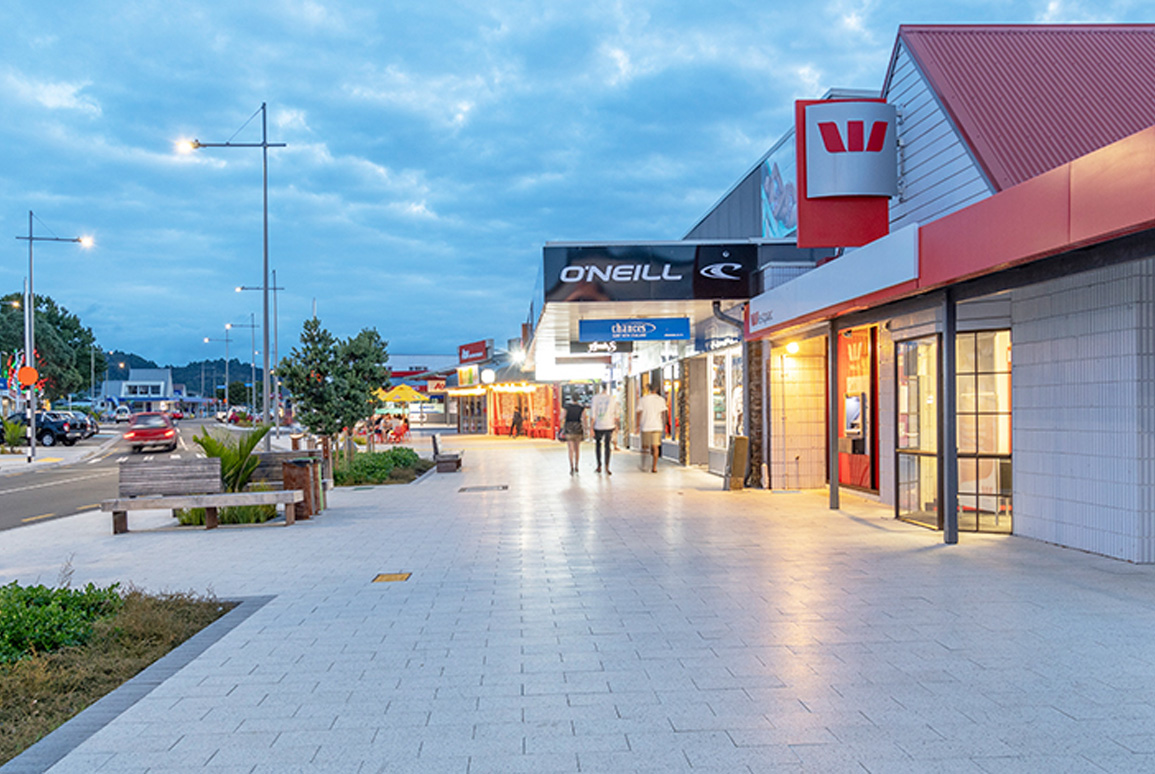CPTED: Designing for safe social spaces
23 November 2021
Crime prevention through environmental design (CPTED) uses thoughtful design interventions to create safer neighborhoods and retail precincts. It supports the social framework needed for self-policing, by contributing to an attractive environment in which people will want to gather.

Among the main principles of CPTED are natural surveillance and access control; territorial reinforcement and space management; support for legitimate activities; and maintenance of a positive image. Incorporating these strategies into public space design can help to create an attractive and secure environment that encourages activity, vitality and viability; thus enabling a greater level of safety.
In designing (or revitalising) urban retail precincts and small town high streets, these principles help inform the placement of lights, street furniture and other elements. The ultimate goal is to make these spaces the sort of places that people value and want to spend time in.
Morné Hugo is one of several Boffa Miskell landscape architects and urban designers who have a keen interest in CPTED. He says any overt security features should be integrated into public spaces to make them feel unobtrusive and a positive visual feature.
“Objects such as planter boxes and seating elements, used in combination, can provide an attractive improvement for a town centre,” Morné explains.
“They can also function as a method of ‘target hardening’ in front of vulnerable shopfronts; without necessarily using confronting things such as bollards, which are functional, but can detract from the end outcome and send a negative message to the community and visitors.”
Bollards are often seen in front of streetside ATMs, to demarcate the area and potentially protect from “ram-raids” but, depending on the width of the pavement and their location, they can be disruptive.
“Similarly, steel roll-down doors on shopfronts can send a bad message about a neighbourhood. There are better solutions,” Morné continues.
A well-lit and attractive street, with a range of retail and hospitality options, encourages use by residents and visitors even after dark; and that activity and ‘eyes on the street’ creates the most effective deterrent.
But, in those circumstances when a spate of crime is occurring on a particular street or area, an immediate interim solution may be needed.
Heavy concrete planter boxes can be made attractive and integral to the broader ‘look’ of the street with appropriate design details and plant selection. And, as with any ‘tactical urbanism’ strategy, they can easily be removed if circumstances change (they are no longer needed); if public opinion changes (the community does not want them); or they prove ineffective, and a more overt solution is needed.
“As designers, we would approach this situation as with any other design project, and come up with some desktop design concepts for what could be a combination of modular planter box and seating elements, which are specifically designed to serve the functional requirements of protecting shopfronts, whilst not appearing heavy or unsightly,” Morné says.
Colour and patterning could be added, but with urgent quick-fix situations, there’s usually little-to-no time for proper community engagement and co-design.
“When adding hard landscape elements to the street is primarily about providing a quick response to anti-social behaviour, getting too fancy with random ‘decoration’ doesn’t really work — often a simple, elegant design solution is the best approach,” he explains.
“When we are involved with these types of designs, we would generally do this in conjunction with a street furniture supply company, who is able to work with our designers to come up with the best ways to fabricate elements from a function and cost perspective. Usually, trial units would be fabricated and tested, these could then be refined and rolled out to a wider area as and when required.”

